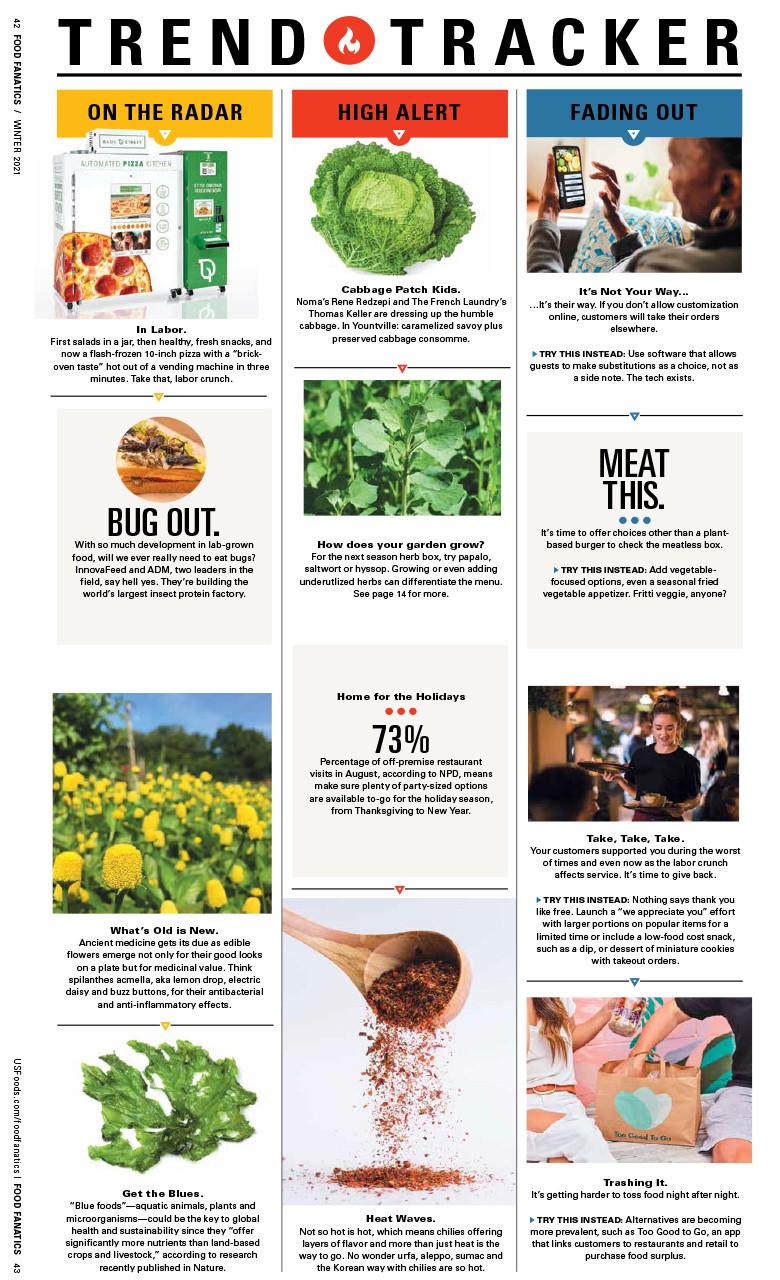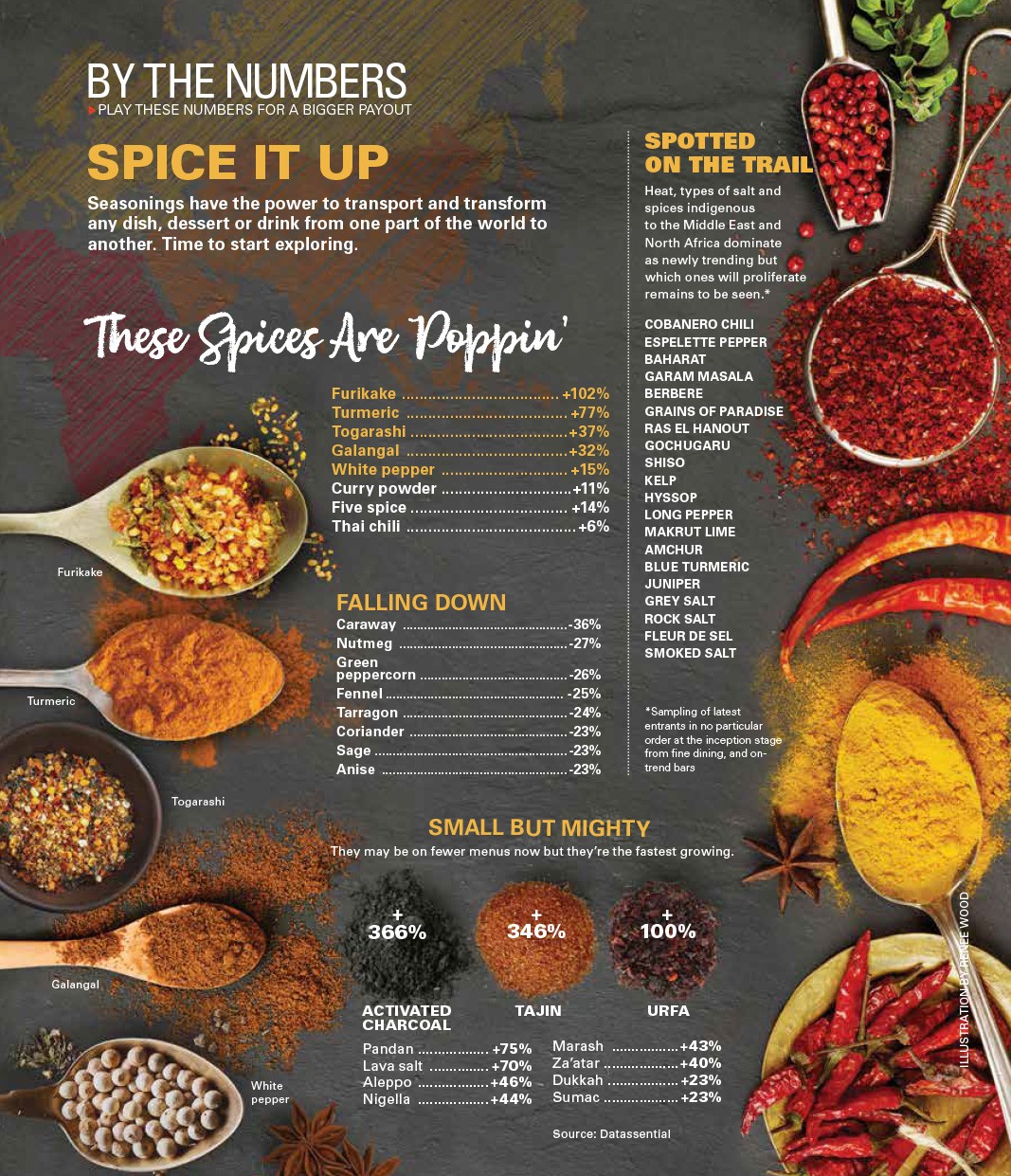Picture of Health
Immune boosters can draw diners
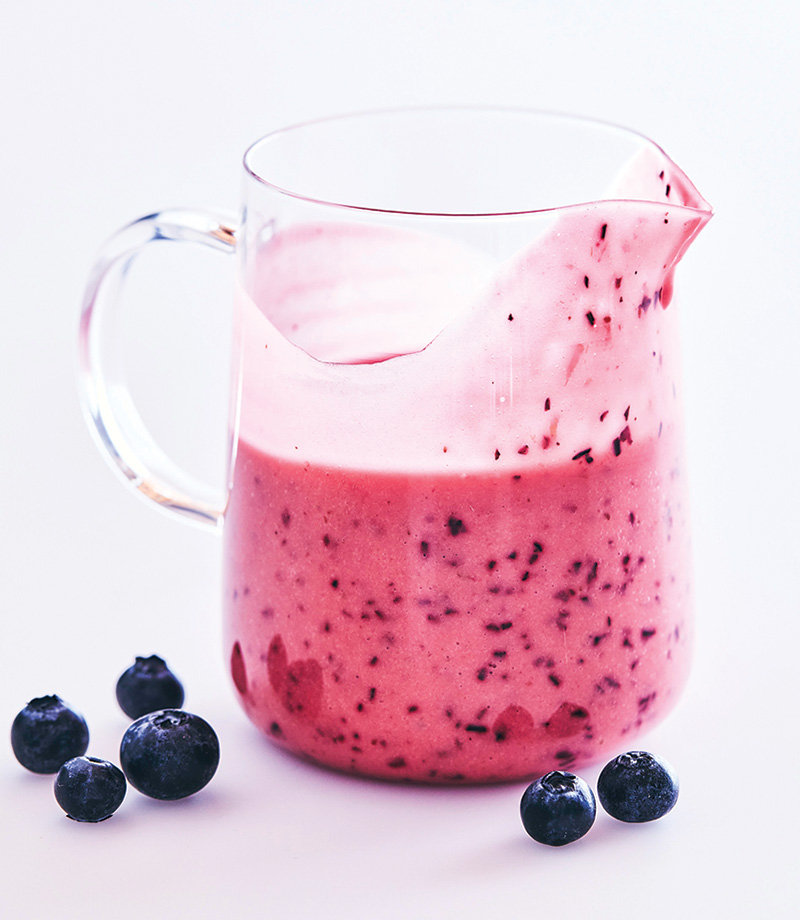
When the Coronavirus hit, most food-conscious Americans fell into two camps: They stuffed themselves with comfort food like fried chicken, pizza and burgers – or they made a mad dash to find turmeric smoothies, grain bowls and healthy dishes to help combat any ailment. Sometimes it was both in one day because, you know, balance.
This wasn’t lost on foodservice. For years, consumer packaged goods brands have been flooding the market with products that promised better health – and sales skyrocketed during the pandemic. As consumers looked for ways to get extra vitamin C and D, zinc, potassium and magnesium into their bodies, chefs around the country took notice. They answered the call for immune boosting foods with more creative menus.
“It’s more than just being conscious of different eating choices or dietary considerations,” says Mee McCormick, chef and co-owner of Pinewood Kitchen & Mercantile just outside of Nashville. “Instead of trying to tell people what not to eat, we’re providing them with something to eat.”
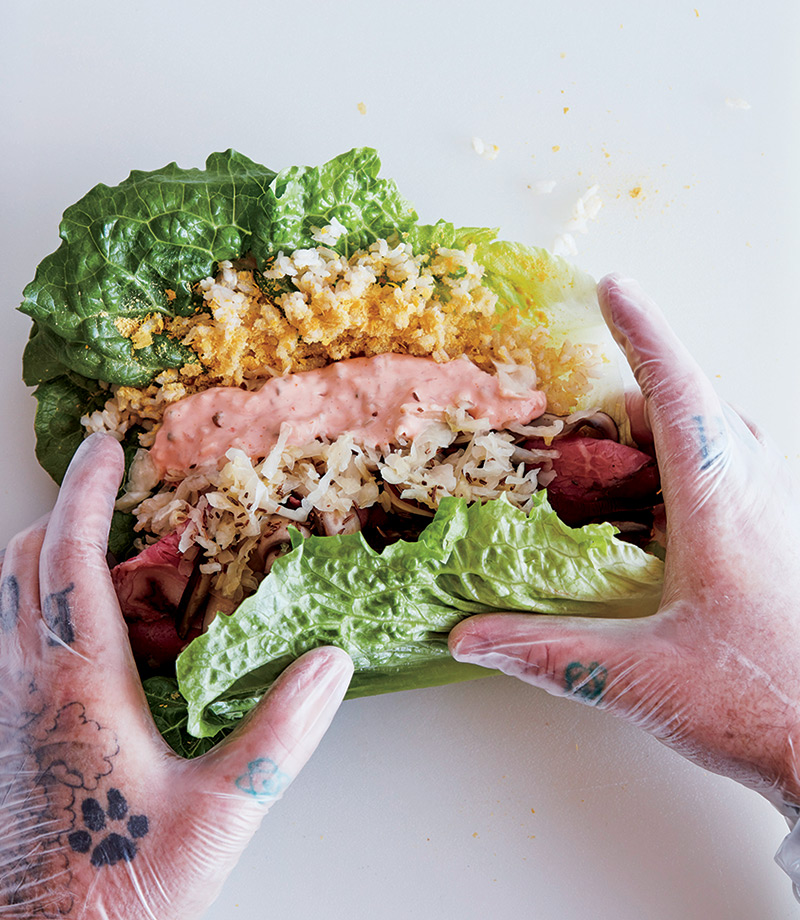
The pandemic hastened what Americans had already been looking for in food, so buzzwords like immune-boosting, functional foods and antioxidant are more common on menus than ever. Elixirs and tonics, bone broth, blueberries, pomegranate, dark leafy greens, reishi and other mushrooms are becoming front and center. Chefs pivoting to takeout now offer meal kits that promote health and wellness. Others have turned to leading a cleaner lifestyle themselves, which inspires staff and customers, and in turn means longevity for their business.
For McCormick, learning about microbiome-friendly foods helped her survive several autoimmune disorders that left her gut ravaged. She worked with a macrobiotic counselor to understand the best foods to eat, and went to culinary school to make it. She knew she wasn’t alone in this journey, so she created Pinewood Kitchen to offer down-home favorites for others like her.
“When the immune system is overactive, we have to find a way to balance it, and that’s with gut health,” she says. “So I learned to soak grains to remove irritants, add sea vegetables to a broth for soups, and find alternatives to wheat and dairy.”
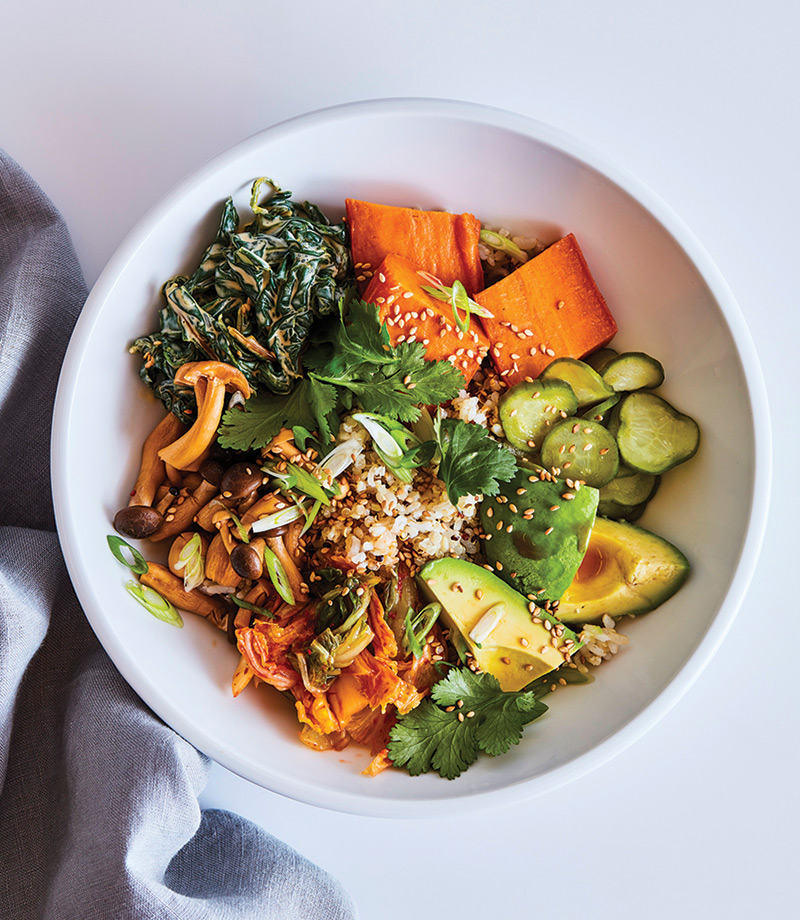
McCormick admits her customer base wasn’t always the first to clamor for “health” food. But people are drawn to the familiar dishes made with better-for-you ingredients. This sort of inclusivity has only gained steam since the pandemic started. It’s why she now reaches beyond the restaurant walls with weekly farm box deliveries for locals, and antioxidant-packed soups like sweet potato lentil for nationwide shipping. And she penned two cookbooks, including 2020’s “My Pinewood Kitchen, A Southern Culinary Cure,” that celebrates down-home cooking with a healthful spin.
Studies have shown that a strong immune system is the first line of defense against COVID-19, and nutrient-rich foods can help boost immunity. McCormick emphasizes plants and plant-based products in her innovative dishes, but also biodynamic vegetables, grass-fed beef and pasture-raised pork from her own farm. Her fried chicken is grain-free, and comforting soups have chickpea miso for added flavor. Hijiki in quinoa might garner a few raised eyebrows, but the dish with seaweed is still a big seller.
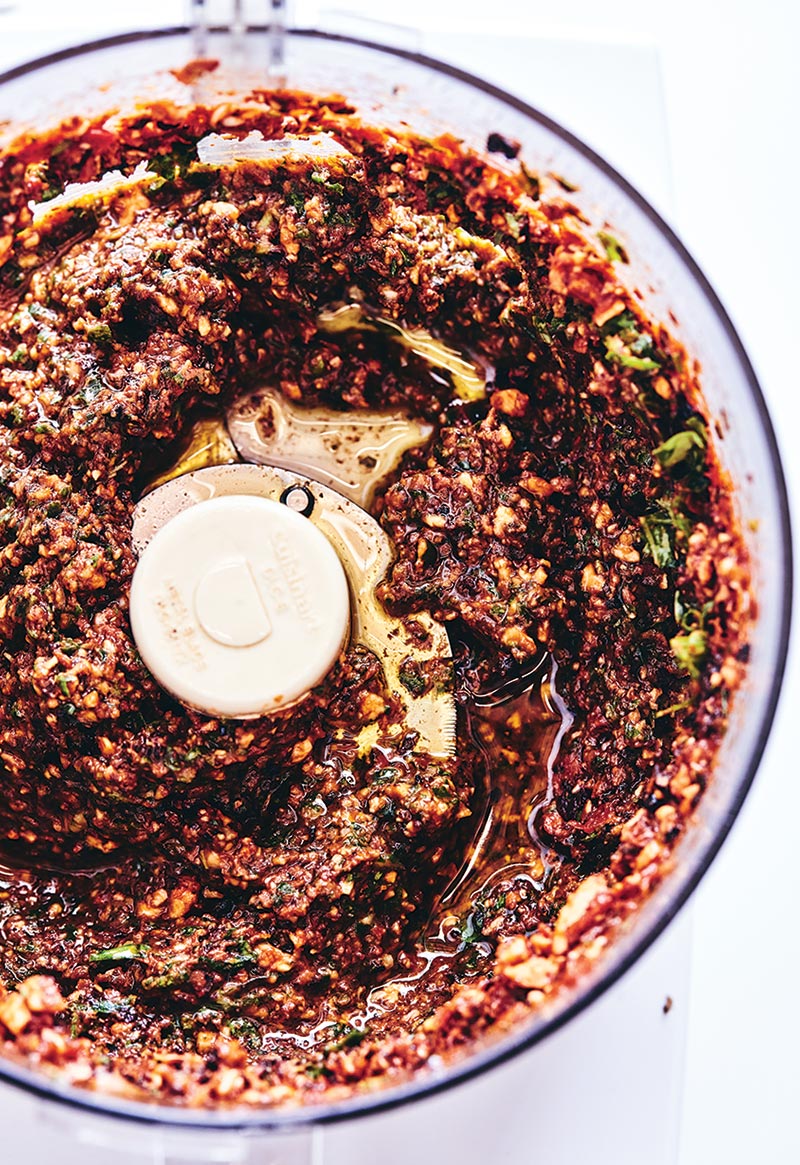
Sometimes it’s about incorporating familiar ingredients that still pack a wholesome punch. Diners might not be familiar with lion’s mane mushrooms, an anti-inflammatory powerhouse, but they probably know shiitake, which have just as many benefits. She tops a white bean salad, a Southern staple, with probiotic- rich pickles to up the healthy quotient. Superfood blueberries aren’t just the star of a protein-packed salad; they’re the base of the vinaigrette, too.
“It’s all about, how do we reach regular people? It’s the common things that work,” she adds. “I love the idea of comfort food. But it should add comfort to our lives, not wreck it.”
Herbs are among the most underrated way to incorporate immune-boosting benefits. Promoting health and well-being at Calabash Tea & Tonic in Washington, D.C., Sunyatta Amen offered spice packs and tea boxes specifically geared towards wellness. But it’s not just about elixirs and drinks. She includes recipes for unique ways to use herbs and spices, outlining the benefits of each ingredient, like the North African/Mediterranean pesto made with almonds (rich in protein), garlic (anti-fungal), rosemary and basil (high in antioxidants), sun-dried tomatoes (super rich in vitamin C) and black olives (increases heart health). It’s full of healthy fats, plus vitamin A and C, calcium and iron, an immunity boost ready for pasta.
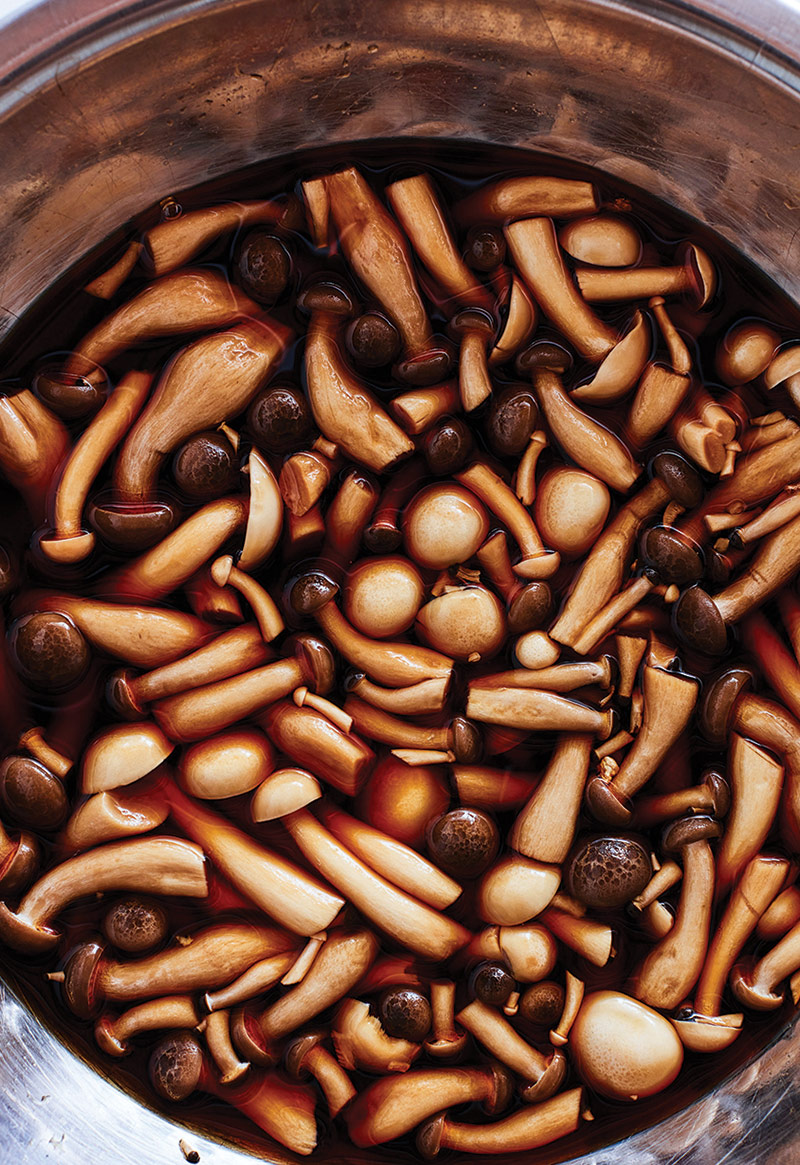
Inspired by the healing aspect of food, Deborah Williamson weaves it into her Brooklyn bistro James. Black vinegar gives roasted Brussels sprouts a hit of flavor and a dose of essential amino acids. Plenty of greens and turmeric populate the menu. Organic hot cocoa made with a reishi mushroom elixir packs a wallop of immunity-boosting qualities, antioxidants and anti-inflammatory benefits.
Williamson sells weekly farm boxes and kits geared toward boosting immunity. When the annual flu season compounded coronavirus worries, she sold a kit stocked with bone broth and squash soup, turmeric tonic, calendula salt, matcha bitters and more. There’s even a “wellness” tab on the restaurant website for easy ordering.
For Jeanne Cheng, opening her restaurant Kye’s in Santa Monica, California, was the product of finding dishes her son would eat. Diagnosed with several food sensitivities since he was a toddler, his kid-friendly options were limited, so she tapped into her ayurvedic and Chinese medicine background to come up with items such as the Kyerito, a wrap that uses a fresh collard, nori or romaine lettuce leaves instead of a flour tortilla or flatbread.
Recipes from this article:
Believing that food can destroy our immune systems as much as help it, Cheng encourages well-being with every dish, taking into account allergies or sensitivities to gluten, dairy, nuts, egg and soy. By design, all ingredients used for the handheld meals – nutrient-rich greens, brown rice, wild salmon, raw sprouted sunflower seeds – offer something other than flavor.
Having a dietitian help balance vibrancy and taste with health benefits is useful. When Wildseed opened in San Francisco, Alejandro Morgan, head of culinary for Back of the House restaurant group, and consulting chef Blair Warsham, worked with registered dietitian Alexandra Rothwell Kelly for menu development.
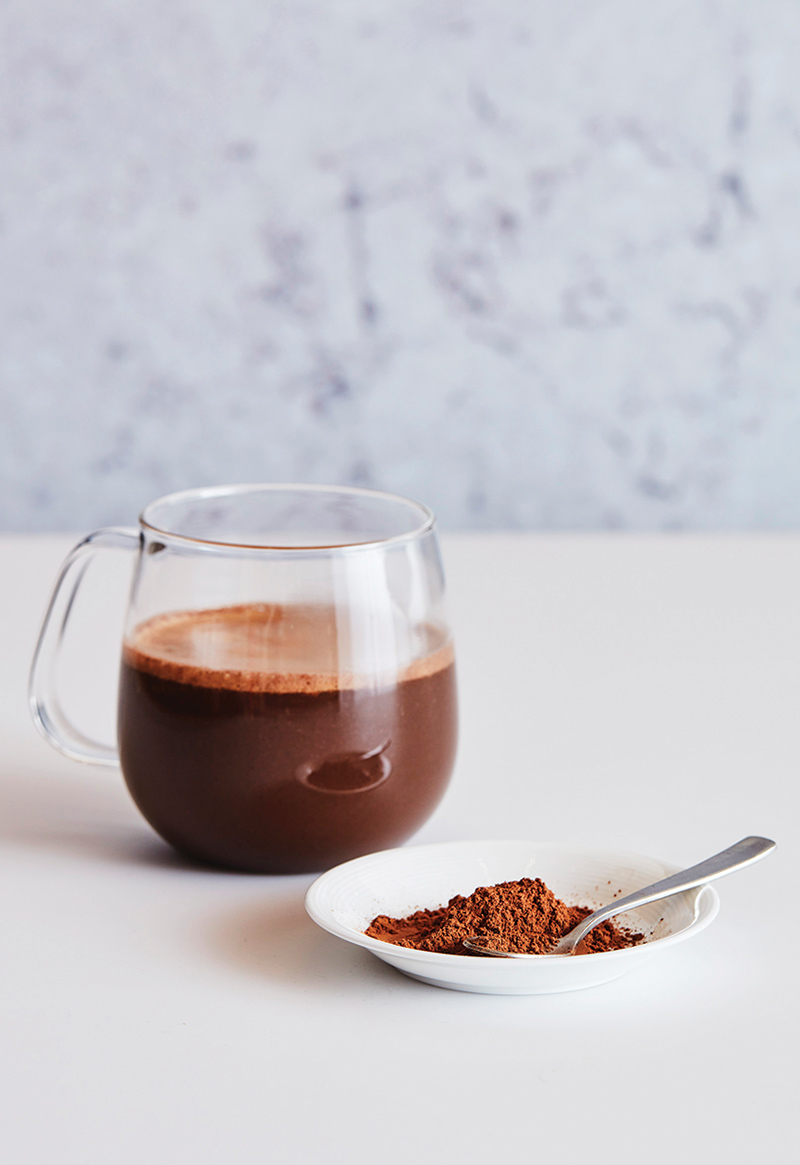
“Our thoughts are first to identify ingredients that are healthy to our bodies, like lowering cholesterol, providing natural probiotics for our gut, antioxidants to help our brain functions, anti-inflammatory ingredients,” Morgan says. “In some cases we can develop a dish that revolves around a specific ingredient that provides some of these qualities; in others we add an ingredient to a dish.”
Using seasonal, organic, fresh ingredients has been the backbone of Wildseed’s menu, and “eating the rainbow” is one way to help customers (and the chefs) understand what’s best for them. A color wheel on the website guides customers: Yellow and orange, like turmeric, squash and corn, improves immune functions and your skin; blue and purple, like berries, potatoes and cabbage, are rich in vitamins C and K; black, like olives and lentils, help battle congestion and allergies.
“As cooks, we almost never look at colors on our food in terms of health benefits, but rather in terms of visual effect,” Morgan says. “But it’s interesting how specific colors do specific things to our bodies. To me, this is the power of nature.”
Wildseed’s donburi bowl – replete with super grains like quinoa, millet and brown rice; probiotic-rich kimchi; potassium-loaded avocado; inflammation-reducing yam; shimeji mushrooms; and dark leafy greens – is just one example of how super-charged ingredients cohesively come together to do some good.
“We’re all catching on now,” McCormick says. “We’re really starting to wake up and realize we need to take care of ourselves and our communities. We’re using ingredients in different ways, thinking of people with allergies from a place of empathy, looking to boost immunity, and it’s influencing people. It’s changing because we have to change. As long as we set the table, they’ll come eat at it.”
HEALTH-BOOSTING POWERHOUSES THAT ADD FLAVOR AND FLAIR.
Calendula, aka Pot Marigold
The petals of these bright orange flowers are edible, adding a peppery bite to soups or salads. Also used as an extract or powder, it’s high in antioxidants, including flavonoids, polyphenols and carotenoids.
Chinese Yam
In Mandarin, the name means “mountain medicine,” the first giveaway to the healing properties of this root vegetable. Chock-full of vitamins B-1 and C, plus amino acids that help aid digestion and promote good gut health. It’s good in soups, stews and stir-fries.
Cranberries
The antioxidant-rich and vitamin-charged fruit should not be relegated to the holiday table. Considered a superfood, a handful a day can help boost immunity, keep urinary tract infections in check and reduce the risk of cardiovascular disease.
Ramps
Spring’s favorite special ingredient, this allium is rich in vitamin C – twice as much as in the same quantity of oranges – which aids immune health.
Reishi Mushroom
The benefits of these once-rare mushrooms have been known in Eastern cultures for centuries. Packed with molecules like polysaccharides, fiber, peptides, minerals like zinc and iron, plus numerous vitamins, it’s practically a wonder drug designed by nature.
Kiwi
The fuzzy fruit with green flesh has more potassium than bananas, and is an excellent source of immunity-boosting vitamin C.


